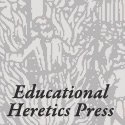Home Education and Child Abuse: How Media Rhetoric Drives the Myth.
Wendy Charles-Warner 2019
Abstract
Successive proposals have been made in recent years to introduce strict monitoring of home educated children, on the basis that they are at safeguarding risk due to being ‘invisible’, ‘unseen’, or ‘off the grid’. Concurrent with these political moves has been a prodigious rise in media articles relating to home education, mostly led by the assumption that those children are at risk. Emotive language within those reports has raised public interest in the issue, leading to debate in private and professional circles alike. In what appears to be a causal link, these reports fuel growing calls for introduction of monitoring of home educated children. This study looks at the basis for those calls for monitoring, by examining empirical evidence of relative safeguarding risk between home educated children, children under 5 years of age and children aged 5 to 16 years.
Home educated children were found to be subject to statistically significant higher rates of referral for assessment under the Children Act 1989 s47 at 4.17% than were children under 5 years of age at 2.34 % and children aged 5 to 16 years at 2.03%. Despite these higher rates of referral, no significant difference was found between rates of child protection plan in children who are home educated at 0.44% and children aged 5 to 16 years at 0.43%. Difference in rates of child protection plan in children under 5 years of age compared to home educated children and children aged 5 to 16 years were statistically significant at 0.71%. Conversion rates from referral under the Children Act 1989 s47 to child protection plan were 11.06% in home educated children compared to 35.40% in children under 5 years of age and 26.81% in children aged 5 to 16 years.
Despite home educated children being at no greater safeguarding risk than other children, media rhetoric is fuelling calls for strict monitoring of those children, whilst self-perpetuating concerns in respect of their safeguarding. This in turn leads to unwarranted pressure on children’s social service’s resources and on home educating families, who face intrusion into their private family lives if calls for such monitoring are acted upon.
FULL RESEARCH HERE:
2019 Research, Home Education and Child Abuse How Media Rhetoric Drives the Myth





Home » 2019 Research: Home Education and Child Abuse How Media Rhetoric Drives the Myth
2019 Research: Home Education and Child Abuse How Media Rhetoric Drives the Myth
Alternatives, CPE / PEN News and Comment, E-briefing, Home-Based Education, Research, Think Pieces and Provocations, Unschooling News · Tagged: home education, safeguarding, unschooling, Wendy Charles-Warner
Home Education and Child Abuse: How Media Rhetoric Drives the Myth.
Wendy Charles-Warner 2019
Abstract
Successive proposals have been made in recent years to introduce strict monitoring of home educated children, on the basis that they are at safeguarding risk due to being ‘invisible’, ‘unseen’, or ‘off the grid’. Concurrent with these political moves has been a prodigious rise in media articles relating to home education, mostly led by the assumption that those children are at risk. Emotive language within those reports has raised public interest in the issue, leading to debate in private and professional circles alike. In what appears to be a causal link, these reports fuel growing calls for introduction of monitoring of home educated children. This study looks at the basis for those calls for monitoring, by examining empirical evidence of relative safeguarding risk between home educated children, children under 5 years of age and children aged 5 to 16 years.
Home educated children were found to be subject to statistically significant higher rates of referral for assessment under the Children Act 1989 s47 at 4.17% than were children under 5 years of age at 2.34 % and children aged 5 to 16 years at 2.03%. Despite these higher rates of referral, no significant difference was found between rates of child protection plan in children who are home educated at 0.44% and children aged 5 to 16 years at 0.43%. Difference in rates of child protection plan in children under 5 years of age compared to home educated children and children aged 5 to 16 years were statistically significant at 0.71%. Conversion rates from referral under the Children Act 1989 s47 to child protection plan were 11.06% in home educated children compared to 35.40% in children under 5 years of age and 26.81% in children aged 5 to 16 years.
Despite home educated children being at no greater safeguarding risk than other children, media rhetoric is fuelling calls for strict monitoring of those children, whilst self-perpetuating concerns in respect of their safeguarding. This in turn leads to unwarranted pressure on children’s social service’s resources and on home educating families, who face intrusion into their private family lives if calls for such monitoring are acted upon.
FULL RESEARCH HERE:
2019 Research, Home Education and Child Abuse How Media Rhetoric Drives the Myth
share:
About the author
Related Posts
Centre for Personalised Education Fact Sheet: ‘What should I do if my child’s other parent doesn’t want me to home educate him?
Centre for Personalised Education Fact Sheet: 'What should I do if my child's other parent doesn't want me
Home Education – Frequently Asked Questions. Centre for Personalised Education Advice.
Home Education - Frequently Asked Questions.
Centre for Personalised Education Advice.
Home
Centre for Personalised Education eNews 12th June 2019
Get the latest eNews from the Centre for Personalised Education here:
Centre for Personalised Education eNews
DfE Consultation on ‘Children not in School’ Centre for Personalised Education Response
The DfE Consultation on Children not in School Closes 24 June 2019.
This is
CPE Communications June 2019